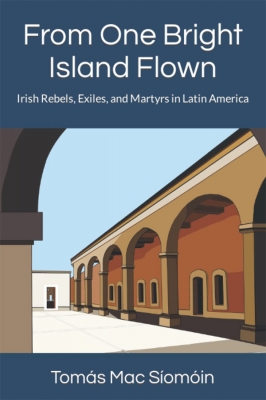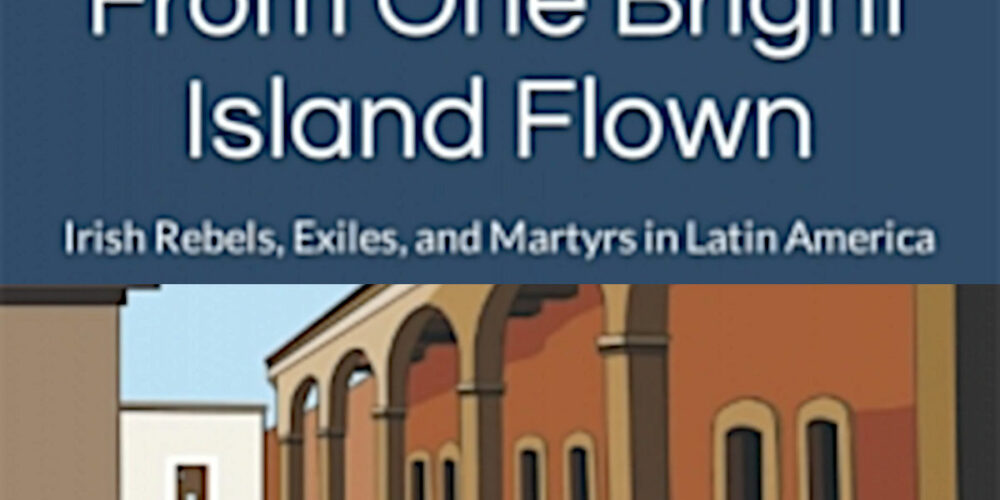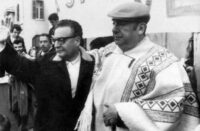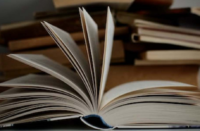
Tomás Mac Síomóin, From One Bright Island Flown: Irish Rebels, Exiles, and Martyrs in Latin America (Nuascéalta, 2022; €9.10 / £7.30). Available on line.
The defeat of the Gaelic Irish, supported by Spanish forces, at the Battle of Kinsale in 1602 was the final blow in the English conquest of Ireland and a watershed in Irish history.
Following this defeat, a great number of the aristocratic and military leaders fled the country as the only alternative to submitting to criminalisation by the coloniser. This brought with it the rapid decline of traditional Irish society and culture, eventually leading to the near-destruction of the Irish language.
The majority of those who emigrated went to Catholic countries, above all France and Spain, though they also went to other European countries, such as Austro-Hungary, to serve in their armies and become military and administrative advisers. The great lament “Caoineadh Airt Uí Laoghaire” tells of the return of one such officer to Ireland, defying the British authorities and paying the ultimate price.
Tomás Mac Síomóin (who died in February), one of the foremost Irish-language writers and activists, had just published a book on the Wild Geese, as these emigrants are known. However, this is a book with a particular focus: on the men who went, via France and Spain, to Latin America and became Latino heroes in their own right.
Typically, they went first to Spain to study, work, or join distinct military units in the Spanish army, commanded by their own officers. Some travelled on to Spanish colonial countries in South America, in such roles as administrators, business people, or military men.
Frequently the men integrated and settled in their new homeland, indeed becoming involved in the fight for independence in those countries. A number became so famous that their names are known to this day. These are the stories Tomás Mac Síomóin tells in what he describes as an incomplete compendium. Nevertheless it is a start and an encouragement to future researchers to look further into the lives of those in the Irish-Latin American hall of fame.
Mac Síomóin introduces the reader to six of these colourful lives.
Liam Lamport was born in Wexford in 1615, later became Guillén de Lampart in Mexico, and ended up, intriguingly, as the inspiration behind “Zorro,” the fox. He is the only non-Mexican represented by a statue at the Ángel de la Independencia monument in Mexico City.
Alejandro O’Reilly too has left a mark in present-day Latin America: a street in Havana, Cuba, named after him. Born in Moylough, Co. Galway, in 1722, he fled with his family from the notorious Penal Laws and was taken to Spain as a child. A military man, he was sent to Cuba by the Spanish Crown in 1763 and from there continued his service to the Spanish monarch in Puerto Rico and Louisiana and back to Cuba and then Spain. Many other Irishmen are memorialised alongside him in this chapter.
Camila O’Gorman, on the other hand, was born in Argentina. She suffered the same Catholic prejudice against women and those who opposed Catholic values, as so many women have done in Ireland. Aged twenty, and eight months pregnant by her lover, Father Uladislao Gutiérrez, she was hounded and betrayed and suffered the death penalty for living outside the iron rule.
The next chapter explores the story of a group hero (as did some of the early ones), the St Patrick’s Battalion. Their deeds for Mexican independence are commemorated on a plaque at the San Jacinto Plaza in the district of San Ángel in Mexico City: “In memory of the Irish soldiers of the heroic St Patrick’s Battalion, martyrs who gave their lives to the Mexican cause in the United States’ unjust invasion of 1847.”
The chapter on Eduardo Bulfin acquaints the reader with the background to the largest Irish emigrant population outside the English-speaking world, in Argentina, which of course includes the family that brought forth Che Guevara. In this chapter, however, Mac Síomóin describes a family that returned to Ireland only to take part in the 1916 Rising. Both children of the family were actively involved in the Irish struggle for freedom: Eduardo, a Republican activist, and Catalina, secretary to the Irish revolutionary Austin Stack.
This small collection of outstanding Irish people with a Latin American connection concludes with the story of Rodolfo Walsh, another Argentine-Irishman, who saved the Cuban revolution. Rodolfo was a founder of Prensa Latina, the Cuban state news agency in Havana. He famously cracked the code that revealed the CIA’s intentions leading up to the Bay of Pigs. Consequently, Fidel Castro was able to defeat this assault on Cuban sovereignty.
Mac Síomóin points out that the book can only open a window on a fascinating connection between Ireland and Latin America. Many more stories await their telling, among them those of Daniel Florence O’Leary, aide-de-camp and chronicler of Simón Bolívar; William Browne, father of the Argentine navy; and Bernardo O’Higgins, Liberator of Chile. Ireland’s loss of its Wild Geese was the Hispanic world’s gain.
Karen Dietrich’s beautiful illustrations complete the book’s purpose of reimagining the lives of those who took their sense of rebellion to the new continent.






